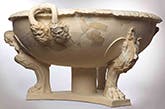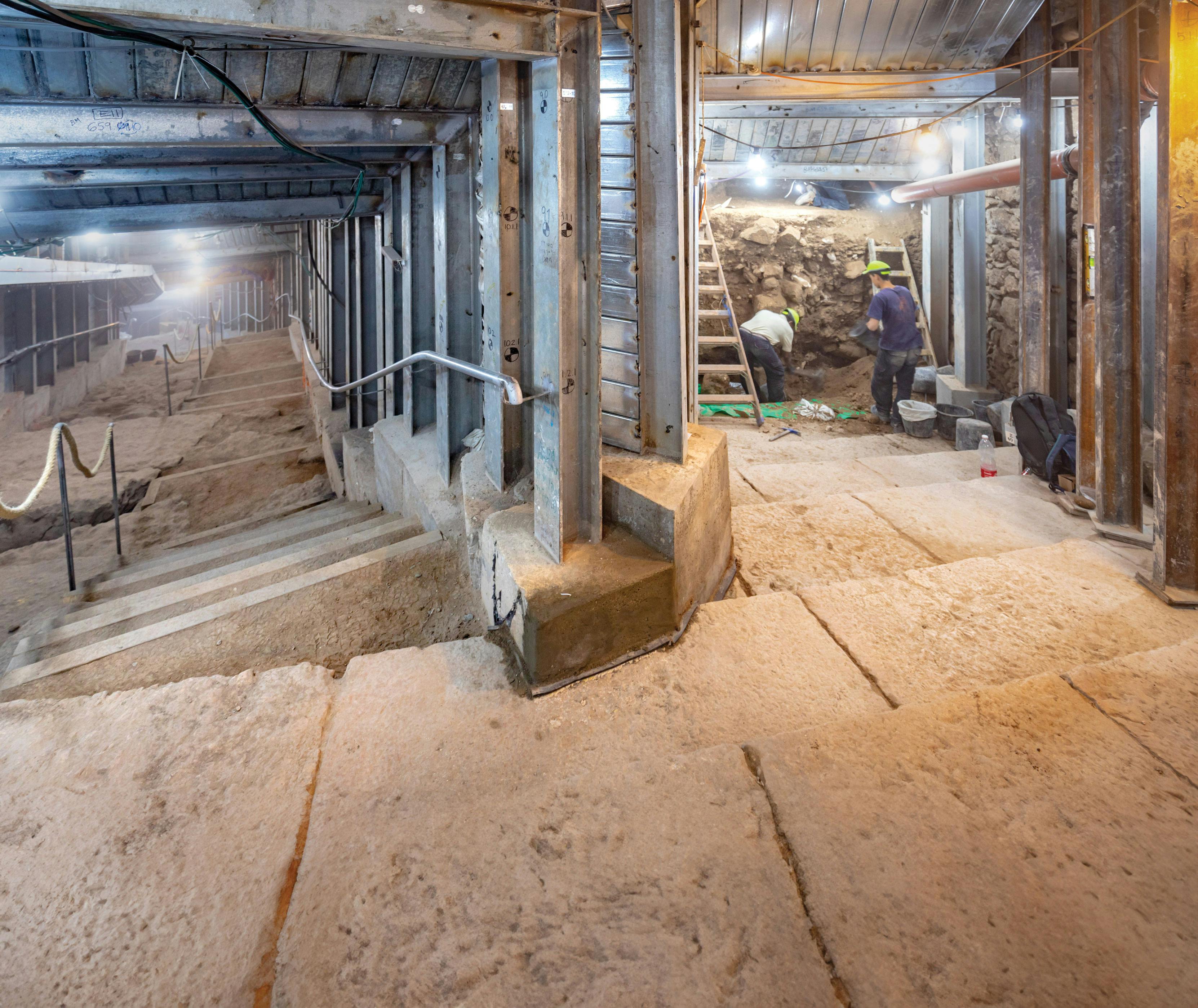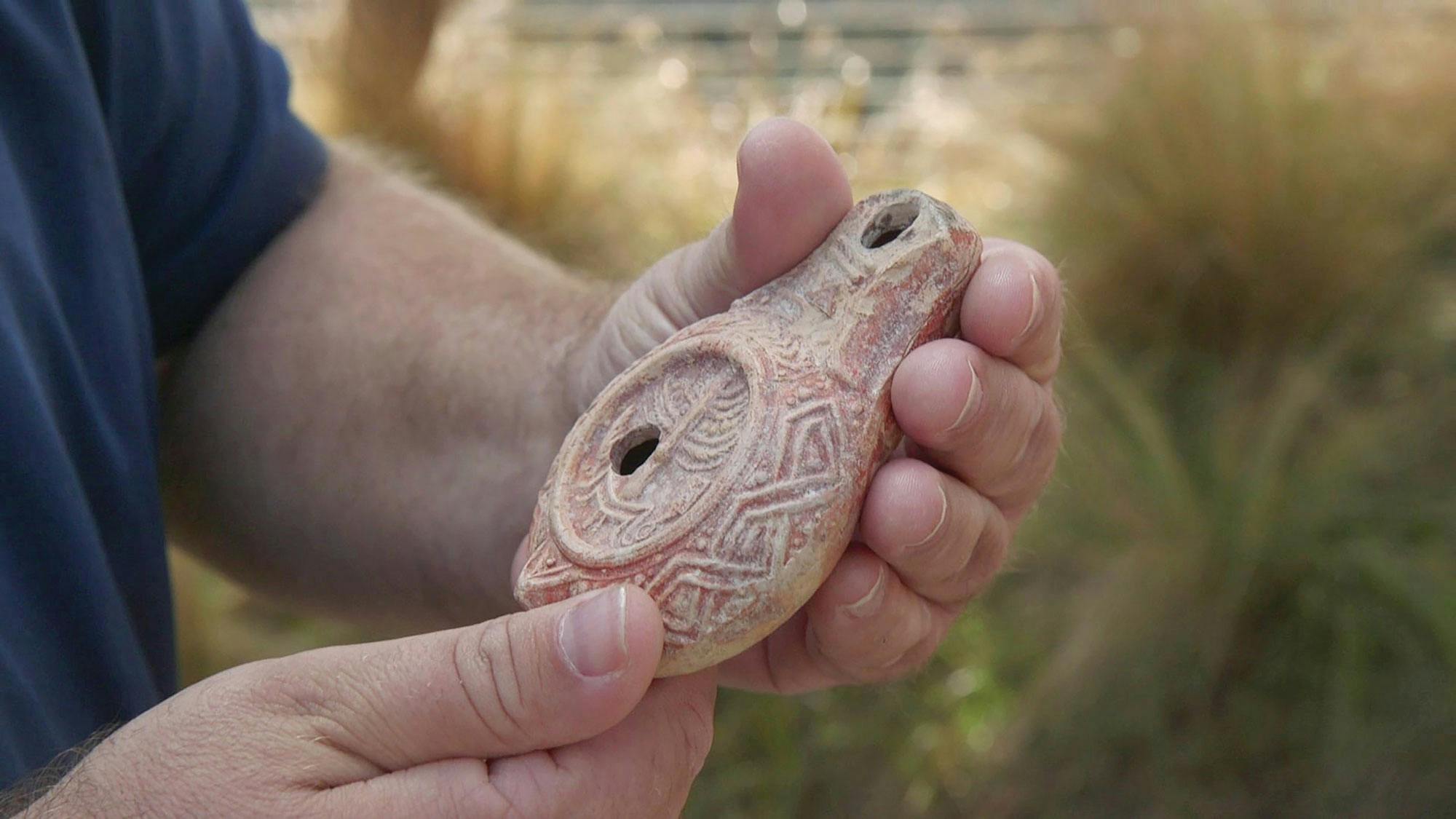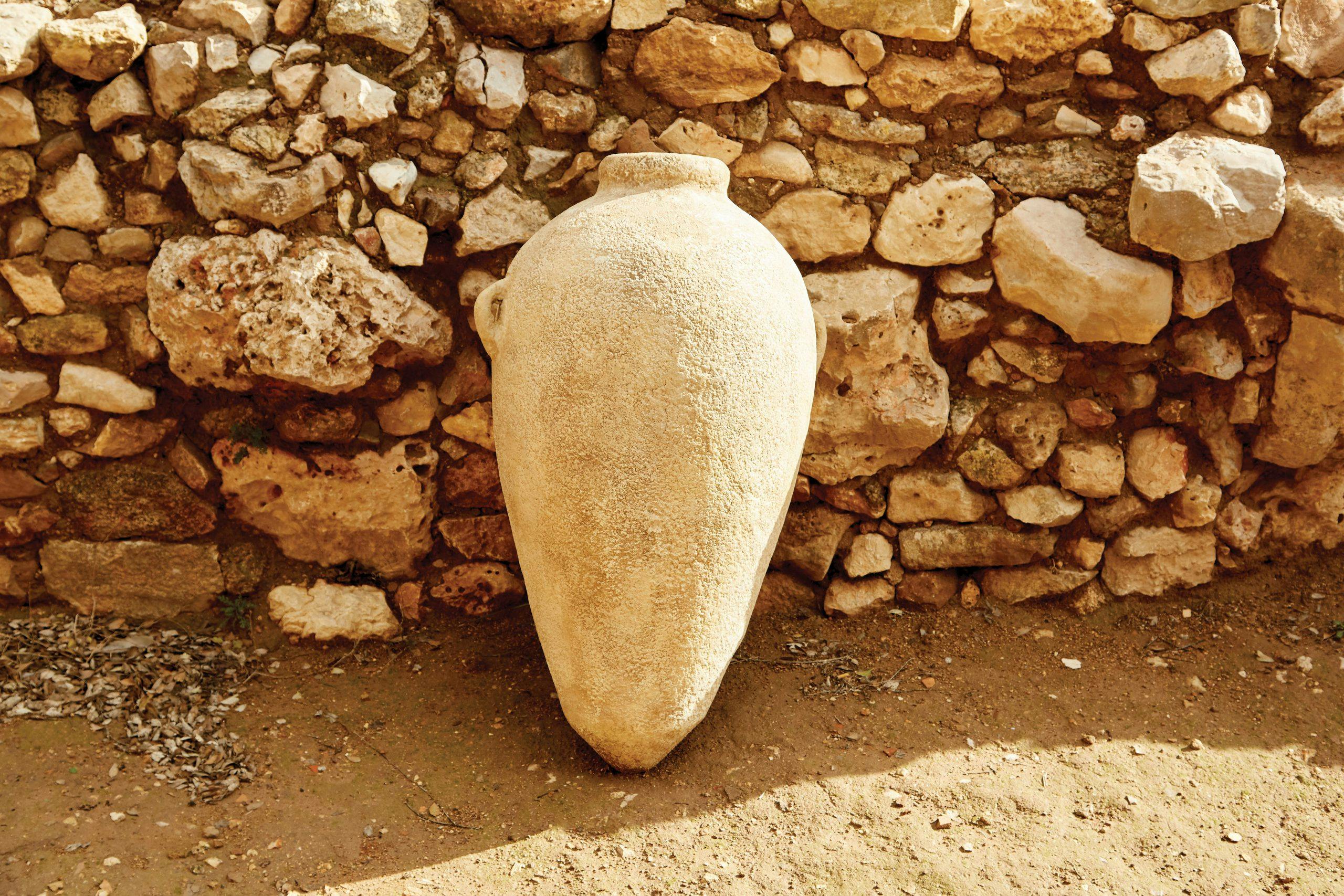World’s First King Herod Exhibition

Among the objects on view—all of which have undergone extensive restoration at the Israel Museum for exhibition display purposes—will be three sarcophagi from Herod’s tomb and restored frescoes from Herodium, his private bath from the palace at Cypros, never-before-seen carved stone elements from the Temple Mount, and an imperial marble basin thought to be a gift from Augustus.
In 2007, after a 40-year search, renowned archaeologist Professor Ehud Netzer discovered the ruler’s tomb at Herodium on the edge of the Judean Desert. The site included a fortress palace and a leisure complex with gardens, large pools, decorated bathhouses, and a theater with a royal box. In his final years, Herod reconfigured the architecture of the complex to prepare the setting for his burial procession and site, and constructed a magnificent mausoleum facing Jerusalem.

King Herod’s sarcophagus was made in reddish limestone and decorated with rosettes and palmettos. [The exhibition] will be organized around the route of Herod’s carefully planned funeral procession, from the throne room at his winter palace in Jericho, through Jerusalem, to his monumental tomb at Herodium. Central themes of the exhibition include Herod’s impact on the architectural landscape of the Land of Israel, his complex relationships within the Roman Empire, and his death and burial.
Herod the Great Builder—King Herod is known for his large-scale building projects, which required enormous resources and transformed the landscape of the Land of Israel. In addition to his most renowned achievement—the renovation and re-construction of the Temple in Jerusalem—Herod also built elaborate palaces, fortresses, public buildings, pagan temples, and cities which reflect the integration of local building traditions and materials with Roman technology and style. Herod’s extensive building activities will be illustrated in the exhibition through architectural elements and archaeological fragments from several Herodian sites, including Jerusalem, Jericho, Cypros, and Herodium.

Glassware, such as this magnificent drinking cup from the time of Augustus in the 1st century BC, was used in the lavish banquets of the Roman aristocracy, and was no doubt used in Herod’s palaces too.On loan from the Metropolitan Museum of Art, New York. International Relations—Herod’s rise to power was tightly bound with the rise of the Roman Empire, whose culture he greatly admired. Herod’s special affiliation with Rome will be presented through portraits of Augustus, Livia, and Marcus Agrippa, and through Augustan luxury objects brought to the region from Rome, as well as Herodian finds imported or crafted by Roman artists.
The Final Journey—The funeral of King Herod in 4 BC began at his lavish winter palace in Jericho and ended at his fortress and palace at Herodium, where he was buried in a mausoleum especially constructed for him. The King’s final journey will be presented through reconstructions of special architectural elements from Jericho and Herodium, including the decorated throne room of the Jericho palace where Herod’s body lay in state and the burial chamber from his mausoleum.
Related Resources

Discover Your Purpose and God’s Heart For You
In today's divided, turbulent world, it's essential for the Church to rediscover God's heart. Our free e-book, authored by a seasoned expert with three decades of experience in Israel, delves deep into the teachings of Jesus (Yeshua) to reveal God’s principles of love and purpose. Learn how embracing these truths can bring significance and impact to your life, even amidst chaos. Subscribe now to receive your free copy and embark on a journey of transformation.




